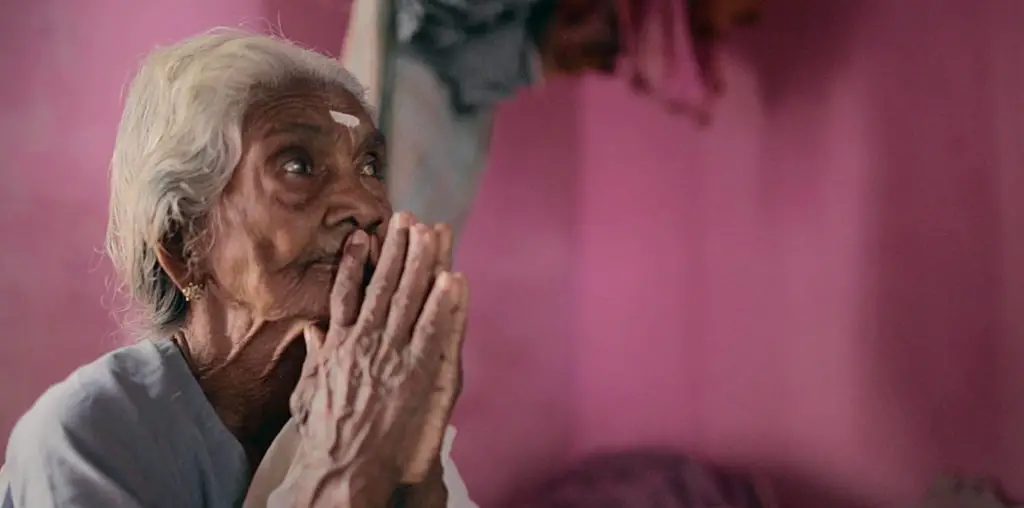
What happens to a dream deferred?
While Langston Hughes wrote those words to put a locus on the intersection of black culture, lives and racism in Harlem, they are particularly impactful when thinking about the life and times of artist Richard Hambleton in Oren Jacoby’s documentary, Shadowman.
Does it dry up like a raisin in the sun?
Coming to prominence in the 1980’s, Richard Hambleton was something of an enigma and a savant in the art world. Harnessing the power of expressionism and New York’s living topography, he built a career off of street art that questioned its viewers sensibilities while living in real time. From staged crime scenes to naturally degrading imagery of himself to the iconic “shadow” series of figures painted in violent, energetic strokes, Hambleton reflected the energy of the city back onto itself with fervor.

“…all these people simply wanted something from him, there is some satisfaction in seeing Hambleton rebuff them.”
And in increasing detail, Jacoby builds this early portrait by talking to the people who experienced Hambleton, and his art. From critics to historians to past lovers, we become acquainted with a flagrant artist who was at once in love with himself and the images he fervishly created. And at first it paid off: Hambleton became a part of the art-elite of the times, rubbing shoulders with Basquiat, Haring and Warhol.
Or fester like a sore—
And then run?
However, at the height of his career, he vanishes into the world, following his drug addiction and a newfound muse: landscapes. It’s at this point that the documentary takes a complex turn. In varying accounts, Jacoby’s talking heads recount how Hambleton’s fame plummeted as he chose to run away from an increasingly corporatized gallery system. While it is on some level heroic–after all, don’t we want our artists to always keep it real?– it’s clear that this departure ultimately ruined him in a way. By giving into his addictions, Hambleton simultaneously grew as an artist and hit rock bottom. In fact, Shadowman makes no bones about showing this strange descent into madness; from world-travel to homelessness and what the kids call “co-living” in a studio apartment with fellow junkies.
Does it stink like rotten meat?
Or crust and sugar over—
like a syrupy sweet?

“From critics to historians to past lovers, we become acquainted with a flagrant artist who was at once in love with himself and the images he feverishly created.”
What’s most interesting about this movement is Jacoby’s choice to interview the photographer who documented Hambleton’s squalor, Clayton Patterson, as it gives us access to footage of that time. We see Hambleton shooting up, painting with blood and looking like a haggard shadow of himself from only a couple decades prior. The sharp, coy young genius of the 80’s replaced by a weary, skilled and sunken journeyman. This middle-period is pockmarked by various stints of homelessness and an increasing yo-yo pattern between successful patronage and fallings out. One in particular leaves a sour taste in the mouth: in a deal gone bad, Hambleton is left with nothing while the dealer who served as his patron nearly gloats about the strictures of the contracts Hambleton signed before the 2008 financial crisis. It’s a tragedy of Greek proportions: after all his work to get away–literally and perhaps metaphorically–Hambleton still falls victim to the system he saw growing in his youth.
Maybe it just sags
like a heavy load.
The final third of the film focuses on an older Hambleton, who makes one more comeback. But at increasing cost to himself and those who love him. It’s a honest and at times hard to watch finale that presents Hambleton as he was–conniving, brilliant, ornery–while also not shying away from questioning the motives of his patrons. Once one steps back and realizes that, on some level, all these people simply wanted something from him, there is some satisfaction in seeing Hambleton rebuff them. It’s as if he were to say “you may have the money, but that does not mean you get to control who I am.” It’s a defiant sentiment that Shadowman rides into its credits.
But it’s also one that is heartbreaking. Hambleton died this November, suffering from various ailments, including skin cancer that devoured parts of his face. And while the complexity of his spirit and commitment to art, on his own terms, lives, there’s a lingering feeling that the patrons–no matter how benevolent–still win in the end. As one curator recounts earlier in the film, she was often disgusted by collectors who, in a truly capitalist mindset, would ask “Is Richard Hambleton still alive?”
Or does it explode?

Shadowman (2017) Directed by Oren Jacoby. Written by Oren Jacoby. Starring Richard Hambleton.
4 out of 5 Shadows



Well-written, insightful review. There was so much greed and self-absorption in the 80’s indeed. It was also an exciting period for street art. I am now going to look for this film and watch it. Thank you.